Q
How Many CC is Haval H6?
The Haval H6 offers slightly different engine displacement options in different markets. For the Malaysian market, the currently common Haval H6 models are mainly equipped with a 1.5 - liter turbocharged engine with a specific displacement of 1499 cc (cubic centimeters). This engine uses direct - injection technology. Its maximum power can reach about 150 horsepower, and the peak torque is about 210 Nm, which balances the fuel economy and power requirements for daily driving. For consumers who pursue stronger power, some international markets also offer a 2.0-liter turbocharged version (1998 cc), but the configuration should be subject to the official announcement of Malaysian dealers. Displacement (CC), as a basic parameter of the engine, directly affects the power output and fuel consumption performance. However, the actual driving experience also needs to consider comprehensive factors such as turbocharging technology and gearbox tuning. When choosing a car, Malaysian consumers can refer to the officially announced power and torque data and the actual test-drive experience. It's worth noting that modern turbocharging technology enables small-displacement engines to achieve a power level close to that of traditional large - displacement engines while meeting the environmental protection trend. This is also the key for SUVs like the Haval H6 to control fuel consumption while maintaining their body - size advantages.
Special Disclaimer: This content is published by users and does not represent the views or position of PCauto.
Related Q&A
Q
What Segment is Haval H6?
The Haval H6 belongs to the compact SUV (C-Segment) category and is the main model of the Haval brand under Great Wall Motors. In the Malaysian market, it's favored by family users for its high cost - effectiveness and practical configurations. The vehicle's body length is around 4.6 meters, and its wheelbase is close to 2.7 meters. It offers two turbo-charged engine options, 1.5T and 2.0T, which meet the Southeast Asian consumers' needs for space and power.
The Haval H6 models available in the Malaysian market are usually equipped with a panoramic sunroof, an intelligent vehicle networking system, and Level 2 driving assistance functions. It's positioned between the local brand Proton X70 and the Japanese Honda CR-V, and its main competitors include the Mazda CX-5 and the Hyundai Tucson.
It's worth noting that C-Segment SUVs in the Southeast Asian market generally emphasize passability. The Haval H6 has a ground clearance of about 180mm, making it quite suitable for Malaysia's rainy terrain. This type of vehicle accounts for about 25% of the private car market in Malaysia and is the second most popular choice after B-Segment hatchbacks. When consumers make a purchase, it's recommended to compare the tax - incentive versions of different brands assembled locally.
Q
What is the Reslae Value of Haval H6?
The second-hand resale value of the Haval H6 in Malaysia is influenced by various factors, including the vehicle's age, mileage, maintenance condition, and market demand. Generally speaking, the residual value rate of this model after three years is approximately 50% to 60%, which is at a medium level compared with SUVs in the same class. This is due to its relatively high market presence and reliable performance.
When Malaysian consumers are considering a second-hand Haval H6, it is recommended that they give priority to vehicles with complete maintenance records and pay attention to regular maintenance to keep the vehicle in good condition, as a good maintenance history can significantly increase the resale value.
In addition, the fuel economy and practicality of the Haval H6 are quite popular in the local market, especially among family users, which provides some support for its second-hand price. If you plan to sell your vehicle in the future, it is advisable to keep the original parts and service records, and at the same time, stay informed of market trends to choose the right time to sell for better returns.
Q
What is the Engine in Haval H6?
The Haval H6 is equipped with a 1.5-liter turbocharged engine. The engine has a displacement of 1,500 milliliters (1.5 liters), uses turbocharging for intake, and has an inline four-cylinder (L4) cylinder arrangement. It can deliver a maximum horsepower of 150 and a peak torque of 230 Nm. The engine's maximum power is 110 kW, which is output at 5,500-6,000 rpm, while the maximum torque is available in the 1,500-4,000 rpm range. This engine works in tandem with the permanent magnet synchronous motor in the hybrid system to provide ample power for the vehicle. The cooperation between the engine and other vehicle components ensures smooth driving and good fuel economy. The engine technology employed can optimize the vehicle's performance, whether during acceleration or normal driving on various road conditions.
Q
What is the Gearbox Type of Haval H6?
The Haval H6 HEV (Hybrid version) uses a 2-speed DHT transmission designed specifically for hybrid vehicles. It works by efficiently managing power from both the electric motor and the engine, helping to improve fuel economy and overall performance.
This transmission is compact and smooth when shifting. In city driving, the system mainly relies on the electric motor. When you’re driving at higher speeds or accelerating quickly, it automatically shifts to the best gear for better response and efficiency.
In Malaysia’s typical stop-and-go traffic, the DHT transmission helps reduce fuel use while also making the ride quieter.
Compared to traditional gearboxes, DHT is better suited for hybrid setups. It handles tropical heat well and stays reliable over time with lower maintenance needs.
Q
What is the PCD Size of Haval H6?
The PCD (Pitch Circle Diameter) of the Haval H6 is 5x114.3 mm. This means that the diameter of the circle formed by the five bolt holes on the wheel hub is 114.3 mm. This specification is quite common in the Malaysian market and is compatible with some models of brands like Hyundai and Honda. It makes it convenient for car owners to replace the wheels or upgrade the styles later. PCD is one of the key parameters for wheel installation. If the size doesn't match, it may lead to installation problems or pose potential safety hazards during driving. Therefore, when replacing wheels, you also need to pay attention to whether the data such as the center bore diameter (CB) and offset (ET) are compatible.
The climate in Malaysia is rainy. It is recommended to choose wheel materials that are lightweight and have good heat dissipation performance. Also, regularly check the tightening state of the bolts to ensure driving safety. If you're not sure about the modification plan, you can consult the local authorized Haval service center or a professional wheel shop for suitable suggestions, so as to avoid affecting the vehicle's performance due to incorrect parameters.
Q
Does Haval H6 Support Apple Carplay?
Some models of the Haval H6 in the Malaysian market are indeed equipped with the Apple CarPlay function. It specifically depends on different years and configuration versions. It is recommended that consumers confirm the latest specifications with local dealers before purchasing, as the in-car system may be adjusted with the model year updates. As a popular SUV among Malaysian users, the intelligent connectivity system of the Haval H6 usually supports mainstream mobile phone mapping functions, including Android Auto, to meet the needs of different users. It should be noted that in-car connectivity technology is affected by the mobile phone operating system version. It is recommended that users keep their iPhone systems updated for the best experience. In addition to mobile phone connectivity, the high-end models of the Haval H6 may also be equipped with technological features such as navigation and voice control. Using these functions in conjunction with Apple CarPlay can further enhance driving convenience. Malaysian consumers can personally experience the smooth operation of the in-car system when making a purchase, and at the same time compare the differences in connectivity functions among models in the same class, and make a choice based on their own usage habits. With the development of automotive digitalization, mobile phone connectivity has become one of the important features of modern vehicles, and all brands are continuously optimizing the user experience in this aspect.
Q
What is the Tyre Brand of Haval H6?
The tire brands that come with the Haval H6 in Malaysia can vary by model year and trim. Common brands include affordable international names like Giti, Kumho, and Maxxis. These tires balance wet grip and durability well, making them suitable for Malaysia’s rainy climate and city roads.
Typical tire sizes are 225/65 R17 or 235/55 R19. For exact information, check your vehicle’s manual or the tire pressure label on the door frame.
Malaysian drivers should regularly check the tire tread depth, which should be at least 1.6 millimeters, and the tire pressure at least once a month to improve safety.
When replacing tires, besides the original brands, options like Michelin Primacy 4 or Goodyear Assurance offer quieter rides and better wet-road performance. Just ensure the new tires match the original specifications to keep the suspension and ABS functioning properly.
Q
Is Haval H6 a Good Car? Learn the Pros and Cons Here
As an SUV with excellent performance in the Chinese market, the Haval H6 has also attracted a lot of attention from consumers in Malaysia. Its advantages include a spacious interior and rich configurations. For example, the high-end models are equipped with a panoramic sunroof, an intelligent connectivity system, and driving assistance functions, all of which can enhance the convenience and comfort of daily car use. Meanwhile, it offers a variety of powertrain options, including fuel-powered and hybrid versions, which are suitable for users with different needs. Its cost - performance ratio is quite prominent among vehicles in the same price range.
However, it should be noted that the after - sales service network of the Haval H6 in Malaysia may not be as perfect as those of other Japanese or local brands. The supply cycle of some parts may be relatively long, which is a factor that car owners who value long - term usage experience need to consider. In addition, due to its large body size, it may take some time to get used to driving the Haval H6 on the narrow urban roads or in old - fashioned parking lots in Malaysia.
Generally speaking, the Haval H6 is suitable for consumers who pursue high-end configurations and large space. But it is recommended that potential buyers thoroughly understand the local after-sales support situation before purchasing and take a test drive to confirm whether it meets their personal driving habits. Since the climate in Malaysia is hot and rainy, buyers can also pay attention to the air - conditioning cooling effect and anti - rust technology of the vehicle when making a purchase. These details are crucial for long-term car use experience.
Q
What is the Width of Haval H6?
The body width of the Haval H6 is 1,886 millimeters. This dimension represents a relatively wide design among SUVs in the same class in the Malaysian market, offering passengers more generous lateral space. This is especially beneficial when three people are sitting in the rear, ensuring a high level of comfort. As an SUV that enjoys great popularity in both the Chinese and Southeast Asian markets, the width design of the Haval H6 also takes into account urban driving flexibility. Despite its relatively wide body, the turning radius is still kept within a reasonable range, making it well-suited to the common road conditions in Malaysia. In comparison, models in the same class like the Honda CR-V have a width of 1,855 millimeters, and the Toyota RAV4 is 1,854 millimeters wide. So, the Haval H6 has a slight edge in terms of interior space.
It's worth noting that when driving in the narrow old - town roads or open-air parking lots in Malaysia, drivers may need a bit of time to get used to this width. It is recommended that novice drivers consider equipping the vehicle with a 360-degree panoramic imaging system to assist in judging the distance between the vehicle and other objects.
The width of this vehicle, combined with its 2,680-millimeter wheelbase, results in a well-proportioned design. It not only ensures ample interior space but also maintains good handling stability. This is one of the reasons why it has received a five - star rating in the ASEAN NCAP safety test.
Q
What is the Road Tax Price of Haval H6? How to Calculate?
The road tax for the Haval H6 in Malaysia is based on engine capacity. For the 1.5-liter version, the annual road tax usually ranges from RM90 to RM120. Exact fees may vary slightly depending on the state government.
In Malaysia, road tax mainly depends on engine displacement. Cars with engines below 1.5 liters generally pay lower rates, while vehicles with over 2.0 liters face significantly higher tax.
Besides road tax, owners should also consider other fixed costs like insurance, which typically amounts to 3% to 5% of the car’s price. Regular maintenance costs depend on mileage and usage.
It’s worth noting that the Haval H6, as an SUV, does not have higher road tax compared to sedans with the same engine size. This aligns with Malaysia’s tax policies.
Car owners can check the latest road tax rates on the official JPJ website or through the MyEG platform. These sources offer accurate calculators and real-time updates.
New energy vehicles benefit from road tax exemptions in Malaysia. However, the Haval H6 is still a traditional fuel-powered car.
Knowing these costs helps you plan your budget better. Before buying, consider long-term expenses like road tax, insurance, and fuel consumption. These factors will affect how economical your vehicle is to own.
Popular Cars
Model Year
Car Compare
Car Photo
Latest Q&A
Q
How much did a new 2018 beetle cost?
The 2018 Volkswagen Beetle had a starting price range of approximately RM120,000 to RM180,000, depending on the trim and options. The entry-level 1.2 TSI Design model was the most affordable, while the top-spec 2.0 TSI R-Line version approached RM180,000—though final pricing could vary with optional extras and dealer promotions.
As a timeless classic, the 2018 Beetle kept its retro charm but packed modern tech like a touchscreen infotainment system and active safety features. Under the hood, buyers could choose between the fuel-efficient 1.2T or the more spirited 2.0T engine.
Fair warning: Volkswagen discontinued the Beetle in 2019, so you’ll only find it on the used market now. That said, its iconic design and nostalgic appeal still make it a hit among collectors. If you’re eyeing a pre-owned model, always check the vehicle history and maintenance records to snag a solid deal.
Q
What engine does a 2018 VW Beetle have?
The 2018 Volkswagen Beetle offered two gasoline engine options across different markets. The primary powerplant was a 1.2-liter TSI turbocharged inline-four, delivering 105 horsepower and 175 Nm of torque, paired with a 7-speed DSG dual-clutch transmission. This compact forced-induction engine struck a balance between urban fuel efficiency and strong low-end torque.
Higher-spec variants featured an optional 1.4-liter TSI turbocharged unit, bumping output to 150 horsepower. Both engines adopted direct fuel injection and belonged to VW’s widely used EA211 modular family, featuring modern tech like lightweight aluminum blocks.
Though retaining its iconic silhouette, this generation Beetle actually shared its underpinnings with the Golf, inheriting the brand’s proven front-wheel-drive architecture. This platform commonality also translated to easier maintenance, as local dealerships were well-versed in servicing these powertrains thanks to extensive parts sharing across VW’s lineup.
Q
What are the different models of the 2018 VW Beetle?
The 2018 Volkswagen Beetle comes in three main trims: Classic, Trendline, and Sport. All models are powered by a 1.2-liter TSI turbocharged engine delivering 105 horsepower, paired with a 7-speed DSG dual-clutch transmission—perfect for city driving with its nimble handling and solid fuel efficiency.
The entry-level Classic trim rolls on 16-inch wheels and features a basic multimedia system. Stepping up to the Trendline adds 17-inch wheels, fog lights, and chrome accents. The Sport trim leans into its name with 18-inch wheels, a sport-tuned suspension, and unique interior color options.
This generation keeps the Beetle’s iconic retro curves but modernizes them with touches like LED daytime running lights. Inside, you’ll find color-matched dash panels, and with 310 liters of trunk space, it’s more practical than most small cars in its class.
Since the Beetline was discontinued in 2019, the 2018 model stands as the last new generation, making it a rising collector’s item—especially the convertible, which holds strong appeal in the used market. For maintenance, stick to routine service every 15,000 km or 12 months, and regular 95-octane fuel is all it needs.
Q
Does the 2018 Beetle have Apple CarPlay?
The 2018 Volkswagen Beetle did come equipped with Apple CarPlay, integrated into its Composition Media infotainment system. This allowed iPhone users to seamlessly connect for navigation, music, and other apps. The system also supported Android Auto, catering to different smartphone users with its intuitive and responsive interface—definitely a plus for convenience on the road.
That said, some early-production 2018 models might require a software update to activate the feature, so it’s worth checking with an official dealer to confirm your car’s specs or available upgrades. Also, wireless Apple CarPlay wasn’t standard across all trims; it depended on the factory-installed options.
For fans of classic styling who still want modern tech, the Beetle struck a nice balance between retro charm and everyday usability. Competitors like the Mini Cooper offered similar connectivity, but let’s be honest—the Beetle’s iconic design was always its standout feature.
Q
What is the fuel economy of the 2018 Beetle?
The 2018 Volkswagen Beetle's fuel efficiency varies by powertrain. The 1.2L TSI turbocharged version delivers a combined fuel consumption of around 5.5L/100km, while the 1.4L TSI model is slightly thirstier at approximately 6.0L/100km – both perform best with 95-octane petrol.
You'll likely see higher consumption in city driving, but it cruises efficiently on highways thanks to its classic aerodynamic design. For better mileage, stick to routine maintenance like cleaning the air filter and keeping tyres properly inflated. These small habits can help squeeze out extra kilometres per litre.
Though discontinued, the 2018 Beetle remains popular in the used car market – its iconic styling and decent fuel economy make it a practical daily driver. Just remember real-world figures depend heavily on driving style and road conditions, so check owner forums for real-life feedback.
View MoreRelated News
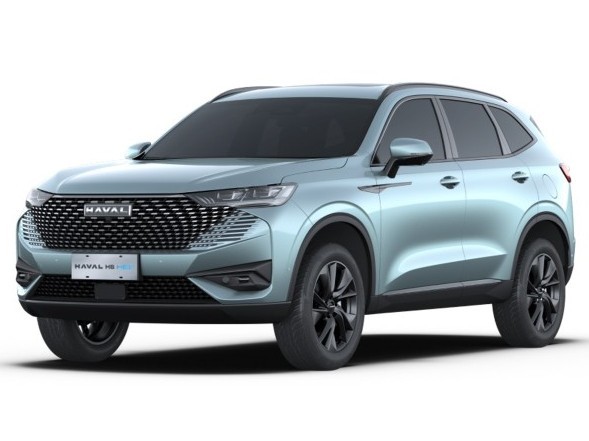
HAVAL H6: A Balanced Performer and a Reliable Choice for Family SUVs
Kevin WongApr 24, 2025
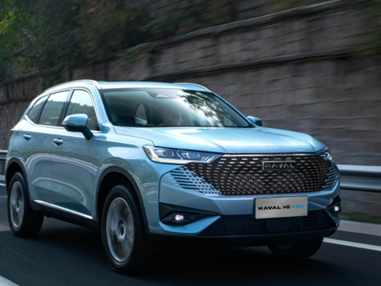
The Chinese version of Proton X70 has defeated the Honda CR-V and now it has arrived in Malaysia
RobertNov 25, 2024
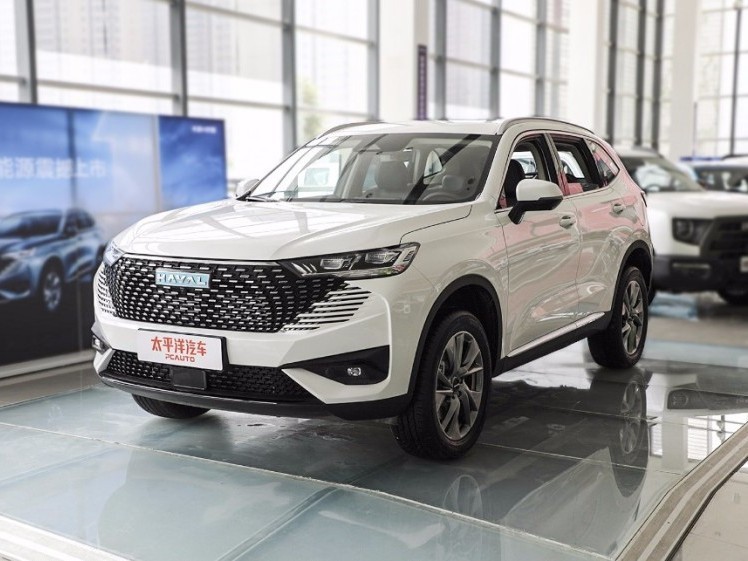
Haval H6 HEV officially launched, early bird discounts not to be missed! Priced at RM139,800!
AshleyOct 10, 2024
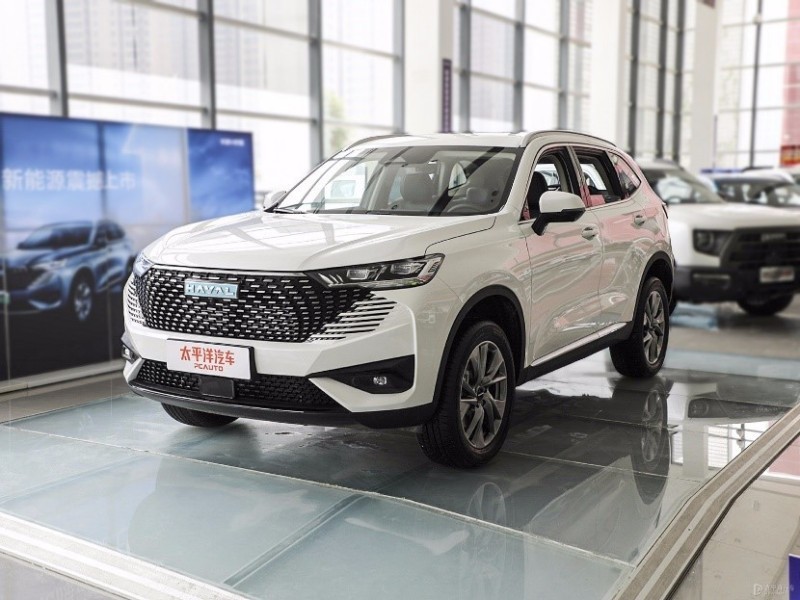
Estimated RM 145,000! GWM Haval H6 HEV is about to hit the Malaysian market, CKD production!
JamesSep 30, 2024
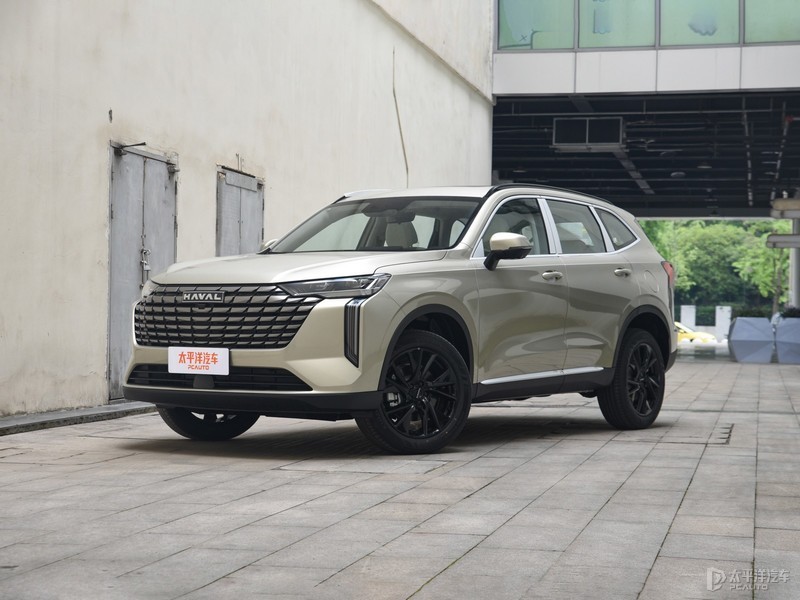
The new Haval H6 is on sale in China, starting at RM76,500. When will it come to Malaysia?
AshleyJun 20, 2024
View More












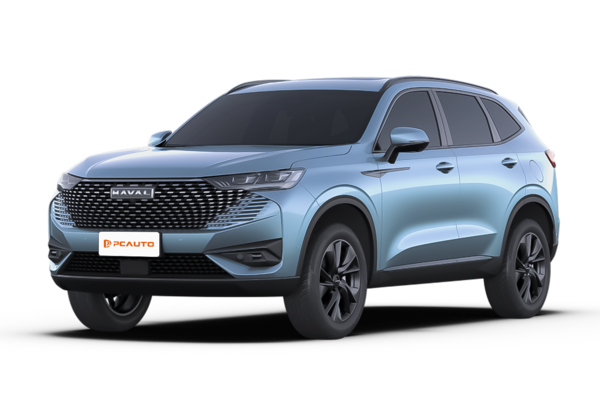





Pros
Cons